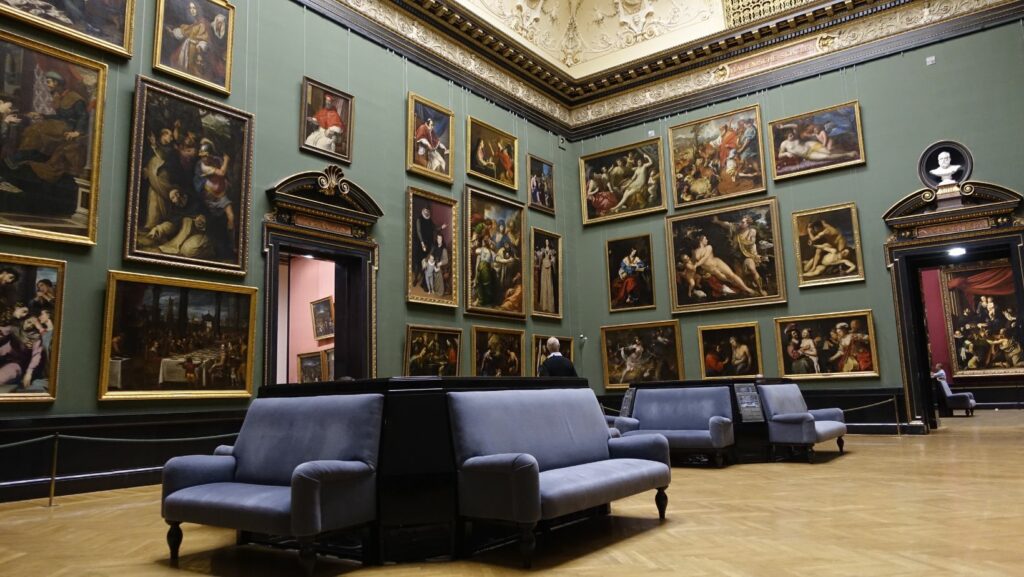Traveling isn’t just about ticking off destinations on a map; it’s an immersive experience that often centers around exploring the rich tapestry of culture that each location offers. Cultural places—museums, historical sites, theaters, and art galleries—serve as gateways to understanding the heart and soul of a place. They provide a unique lens through which visitors can view the history, values, and artistic expressions that have shaped societies around the world.
Cultural Places
Cultural places enrich travelers’ experiences by providing a deep dive into the local history, traditions, and artistic expressions of a region. These locations, ranging from museums to ancient ruins, play pivotal roles in offering a tangible connection to past and present cultures.
Museums and Historical Sites
 Museums stand as custodians of heritage, assembling artifacts that narrate tales of historical significance and artistic merit. For instance, the Louvre in Paris houses over 380,000 objects, presenting an extensive timeline of human creativity from prehistory to contemporary times.
Museums stand as custodians of heritage, assembling artifacts that narrate tales of historical significance and artistic merit. For instance, the Louvre in Paris houses over 380,000 objects, presenting an extensive timeline of human creativity from prehistory to contemporary times.
Historical sites offer a direct link to the past, allowing visitors to step back in time and witness the architectural prowess and societal structures of ancient civilizations. The Acropolis in Athens, for example, provides insights into ancient Greek life and its enduring influence on modern cultures.
Theaters & Art Galleries
Theaters are vital in preserving performing arts and fostering cultural exchange through live storytelling. Broadway in New York City epitomizes this, showcasing a variety of performances that reflect the dynamic nature of American culture and its societal issues.
Art galleries highlight artistic evolution and its impact on society, featuring works that challenge perceptions and provoke thought. The Tate Modern in London, renowned for its modern art collections, offers exhibitions that explore themes ranging from identity to political commentary.
Cultural Places in Europe
Museums and Art Galleries
 European museums and art galleries house some of the world’s most famous artwork and historical artifacts. For instance, the Louvre in Paris is not only a cultural icon but it’s also the world’s largest art museum. It hosts the famous Mona Lisa and the Venus de Milo, attracting several million visitors each year. Similarly, the British Museum in London showcases relics like the Rosetta Stone and extensive collections from various civilizations, emphasizing the interconnectedness of human cultures. In Madrid, the Prado Museum presents an exceptional collection of European art, including works by Spanish masters like Velázquez and Goya. These institutions not only preserve invaluable artwork but also provide access to the public, educating and inspiring admiration for the arts.
European museums and art galleries house some of the world’s most famous artwork and historical artifacts. For instance, the Louvre in Paris is not only a cultural icon but it’s also the world’s largest art museum. It hosts the famous Mona Lisa and the Venus de Milo, attracting several million visitors each year. Similarly, the British Museum in London showcases relics like the Rosetta Stone and extensive collections from various civilizations, emphasizing the interconnectedness of human cultures. In Madrid, the Prado Museum presents an exceptional collection of European art, including works by Spanish masters like Velázquez and Goya. These institutions not only preserve invaluable artwork but also provide access to the public, educating and inspiring admiration for the arts.
Ancient Ruins and Monuments
Europe’s landscape is studded with ruins and monuments that narrate the tales of ancient civilizations. The Colosseum in Rome, a masterpiece of classical architecture, serves not only as a historic site but also a symbol of Italy’s enduring legacy. It offers insight into the engineering prowess and societal structures of ancient Rome. In Greece, the Acropolis stands tall over Athens with its rich history displayed through structures like the Parthenon and the Erectheion. These ruins are essential for understanding the philosophical and architectural advancements of classical antiquity.
Cultural Places in Asia
Temples and Spiritual Sites
 Asia is home to some of the world’s most breathtaking temples and spiritual sites. The Angkor Wat in Cambodia stands as the largest religious monument globally, attracting millions due to its grandeur and intricate carvings depicting Hindu mythology, though it later became a Buddhist site. Equally captivating, the Sensō-ji Temple in Tokyo presents an amalgamation of color, spirituality, and history, immersing visitors in Japan’s cultural rituals. India’s Varanasi, revered as one of the oldest inhabited cities, offers profound spiritual experiences with its ghats along the River Ganges, where rituals and ceremonies are a daily spectacle.
Asia is home to some of the world’s most breathtaking temples and spiritual sites. The Angkor Wat in Cambodia stands as the largest religious monument globally, attracting millions due to its grandeur and intricate carvings depicting Hindu mythology, though it later became a Buddhist site. Equally captivating, the Sensō-ji Temple in Tokyo presents an amalgamation of color, spirituality, and history, immersing visitors in Japan’s cultural rituals. India’s Varanasi, revered as one of the oldest inhabited cities, offers profound spiritual experiences with its ghats along the River Ganges, where rituals and ceremonies are a daily spectacle.
Heritage Villages and Towns
Exploring Asia’s heritage villages and towns gives visitors a peek into the traditional lifestyles preserved over generations. In China, the ancient town of Lijiang is notable for its well-preserved architecture and waterways, representing the rich culture of the Naxi people. Shirakawa-gō in Japan, recognized for its gassho-zukuri style houses with steep thatched roofs, displays unique engineering and cultural adaptation to heavy snowfall.

